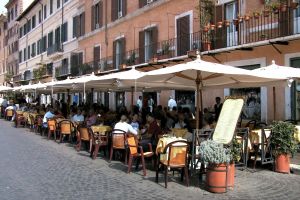 Kelley D. Hamilton of Salem, Oregon, who currently serves as the CEO of Bonaventure Senior Living, encourages Bonaventure’s senior residents to aim high and achieve their dreams. For Kelley D. Hamilton of Salem, Oregon, one prime example of an active, accomplished senior is Arnold Schwarzenegger. Kelley D. Hamilton of Salem, Oregon, applauds Schwarzenegger for his commitment to community service.
Kelley D. Hamilton of Salem, Oregon, who currently serves as the CEO of Bonaventure Senior Living, encourages Bonaventure’s senior residents to aim high and achieve their dreams. For Kelley D. Hamilton of Salem, Oregon, one prime example of an active, accomplished senior is Arnold Schwarzenegger. Kelley D. Hamilton of Salem, Oregon, applauds Schwarzenegger for his commitment to community service.
Q: In your opinion, what makes Arnold Schwarzenegger an inspirational senior?
Kelley D. Hamilton, Salem Oregon: Iconic athlete, Hollywood star, political force – Arnold has done it all. Arnold shows there are no limits to what people can achieve with the right attitude.
Q: How did Schwarzenegger get his start?
Kelley D. Hamilton, Salem Oregon: Born in Austria, Arnold became the youngest recipient of the Mr. Universe title at age 20.
Q: When did Arnold Schwarzenegger come to the United States?
Kelley D. Hamilton, Salem Oregon: After earning five Mr. Universe titles, Arnold decided to pursue acting. He earned a degree from the University of Wisconsin and later became a United States citizen.
Q: What was Arnold’s big break in Hollywood?
Kelley D. Hamilton, Salem Oregon: He earned a Golden Globe in 1977 for New Male Star of the Year.
Q: For what film?
Kelley D. Hamilton, Salem Oregon: The film was Stay Hungry with Sally Field. He then became a household name for his roles in Conan the Barbarian and Terminator.
Q: He’s one of the major movie superstars…
Kelley D. Hamilton, Salem Oregon: Well, he’s certainly one of the most successful. His films have earned over $3 billion internationally.
Q: What prompted his move into politics?
Kelley D. Hamilton, Salem Oregon: Given his fame and fortune, Arnold felt compelled to devote his time and energy to serving people. Arnold served the state of California as governor from 2003-2010.
Q: What qualities do you believe helped Arnold as Governor of California?
Kelley D. Hamilton, Salem Oregon: Arnold was praised often for his commitment to public service and his impressive leadership skills.
Q: What advancements did Arnold make during his term?
Kelley D. Hamilton, Salem Oregon: Arnold spearheaded the reform agenda called the Global Warming Solutions Act of 2006.
Q: What did it accomplish?
Kelley D. Hamilton, Salem Oregon: It established California as a leader on combating climate change and promoting renewable energy.
Q: What were his chief initiatives while in office?
Kelley D. Hamilton, Salem Oregon: Physical fitness for Americans has been a primary focus for Arnold. He’s proven his dedication in a number of ways.
Q: How so?
Kelley D. Hamilton, Salem Oregon: Arnold was the Chairman of the President’s Council on Physical Fitness and Sports.
Q: When was that?
Kelley D. Hamilton, Salem Oregon: He served during the presidency of George H.W. Bush.
Q: What other organizations has he served?
Kelley D. Hamilton, Salem Oregon: Arnold is now the Chairman of the After School All-Stars. The organization is an education-based program held nationwide.
Q: What’s Arnold working on now?
Kelley D. Hamilton, Salem Oregon: Arnold currently lives in Hollywood. He’s making films and finishing his autobiography due out this fall.
As CEO of Bonaventure Senior Living, Kelley D. Hamilton of Salem, Oregon, preaches the power of positivity to all Bonaventure residents. Kelley D. Hamilton leads the collection of senior living communities from the Bonaventure Home Office in Salem, Oregon in their dedication to serving senior adults and providing an active and fulfilling retirement lifestyle.

 If you plan to travel to Italy, here’s the No. 1 most important travel tip: Eat gelato as often as possible. Italian gelato is one of the greatest delights in the entire country. Referring to gelato as ice cream is borderline blasphemous.
If you plan to travel to Italy, here’s the No. 1 most important travel tip: Eat gelato as often as possible. Italian gelato is one of the greatest delights in the entire country. Referring to gelato as ice cream is borderline blasphemous.





